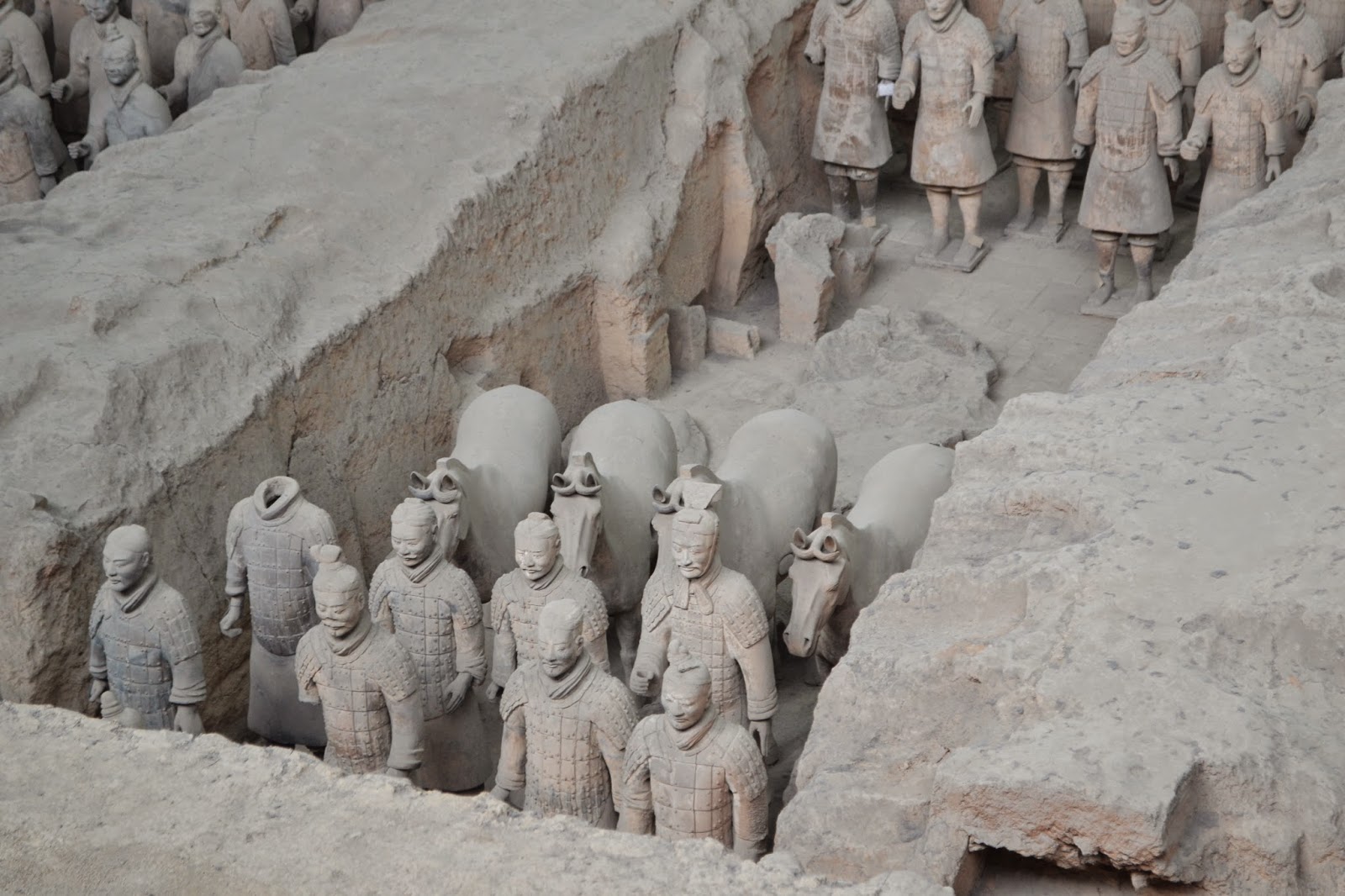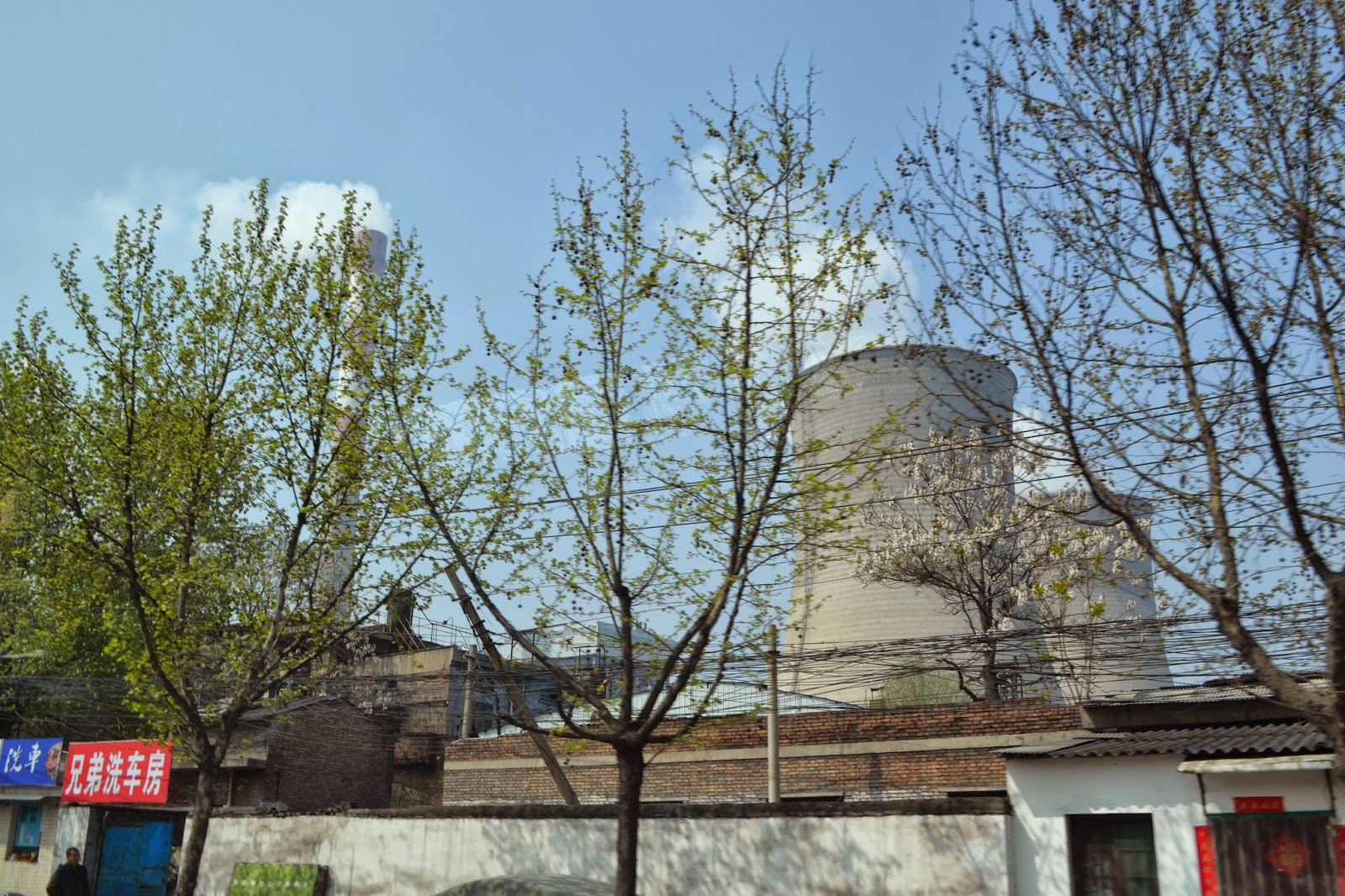Okay, so maybe that was the plot of The Mummy: Tomb of the Dragon Emperor.
The true story does involve Emperor Qin Shi Huang, but he mostly just wanted a really fancy mausoleum. It apparently required 70,000 workers to complete, and included a river simulated with mercury. To help protect him in the afterlife, over 7,000 terracotta soldiers and horses were created and buried with him. They were apparently painted to look realistic, but after the excavation the paint started to peel off and give them the famous clay colored look. It's also because they're real people under a spell that can only be broken by... never mind.
The tomb was accidentally discovered in 1975 by a local farmer, who still attempts to make some sort of living by signing autographs. According to our tour guide, he is remains poor.
The area itself is divided into three pits. The first pit ("Pit 1") was the most impressive and included all the infantrymen, calvary and other soldiers.
The wheels of the chariots (and weapons) did not survive but you can still see an outline.
The process of putting these buggers together would have driven me nuts... you sit there with hundreds of pieces and figure out where they go like some sort of human jigsaw puzzle. The warriors were all life-sized, with limbs, torso and head made separately out of molds and then put together. To create individual features, clay was added.
Pits 2 and 3 were more of the same, but on a smaller scale.
Here you can see some of the red painting on the armor and the impressive detail of the sole of the shoe.
The fine detail that went into this general's face included the forehead wrinkles. Guess they didn't have botox back then.
The most famous of the terracotta warriors.
The markets outside the museum included farmers selling many six inch replicas of the terracotta warriors, starting at the outrageous price of 50 yuan ($8 USD). The tour guide was unimpressed with our attempts at bartering, as evidenced by this interchange:
Group Member: "Candy, we got ours for SO cheap!"
Candy (tour guide): "How much?"
Group Member: "20 yuan ($3) down from 100 yuan!"
Candy: clearly unimpressed "Oh. You can get much cheaper later."
Apparently 10 yuan ($1.60) was the best price. Also our tour guide was named Candy.
Leaving the warriors, we headed on to the Small Wild Goose Pagoda (my camera died, so no pictures) and then biked along the City Wall. The bike was perilous due to its mostly flat tires, but the wall itself is one of the oldest and best preserved Chinese city walls, originally built in 194 BCE. It isn't too big -- only 14 km around. It was pretty fun just biking around.
You may have noticed that most of my pictures show clear blue skies in China. What about the smog? Oh, the coal factories are there lurking... We luckily came to each city after some rainfall which apparently drives the smog away temporarily.
Our short time in Xi'an finished already, we headed on to Shanghai.













lol'd so hard at the mummy reference
ReplyDelete